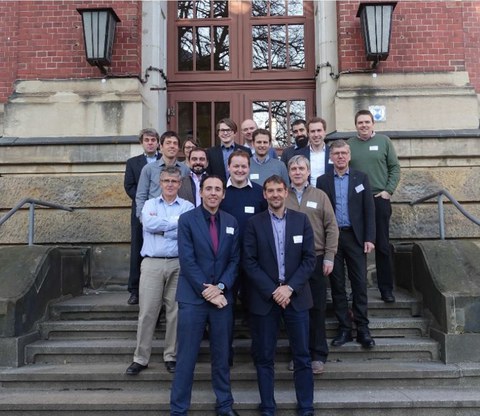Mar 21, 2019
EU-funded Horizon 2020 project for laser processing of surfaces started at TU Dresden

Project start of EU research project "LAMPAS" for innovative functional surface
Dresden 22.01.2019
Surface functionalization is one of the most progressive fields of development for applications in medical technology, the automotive industry and energy research. Today, a large research project on laser-based surface functionalization, funded by the European Union, is being launched. The aim is to produce filigree engravings on different surfaces in the shortest possible time. To this end, scientists under the coordination of the TU Dresden are conducting research together with international partners from industry and research.
At the TU Dresden, the European flagship research project "LAMPAS" (This project has received funding from the European Union’s Horizon 2020 research and innovation programme under grant agreement No 825132. Research volume ~5.1Mio.€) has been launched on Tuesday 22nd January. Due to its innovative solution strategy, the international team was able to succeed itself as one of the best participants in a Europe-wide research competition. The aim of the research project is to produce large-area and cost-effective micro- and nanostructures on various surfaces. The challenge is that the dimensions of the microstructures are smaller than a human hair. According to renowned industry experts, the "LAMPAS" project will bring about an innovative solution for upcoming challenges in the market. The aim is to set the world record for the production speed of such structures. Among other things, an innovative laser beam source with an output power of 1.5kW and ultra-short laser pulses (picoseconds) will be developed for this purpose.
"We are very pleased to be able to win leading European partners for this research project and we are sure that the results will be groundbreaking for various industries", announced coordinator Prof. Andrés Lasagni and could hardly hide his confidence about the success. He is fully aware of the forward-looking characteristics of the project. The international research team includes scientists and engineers from TU Dresden, Bosch, Trumpf, Bosch-Siemens-Hausgeräte (BSH), Next Scan Technology, Near Infrared Technologies (NIT), Lasea und European Photonics Industry Consortium (EPIC).
The inspiration of such micro/nano surface structures is nature, as in the case of the lotus effect or butterfly wings. In this sense, technologies for modifying surfaces instead of composites or for coating surfaces can offer new industrial opportunities (e.g. long-term stable surfaces and more environmentally friendly processes).
Further information and current developments can be found on the homepage of the research association: www.lampas.net
